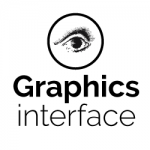This year’s CHCCS Achievement Award goes to Professor Carl Gutwin for his significant and sustained contributions to human-computer interaction research.
Carl Gutwin is a full professor at the University of Saskatchewan, where he co-directs the Human–Computer Interaction (HCI) Lab. Over the past 25 years Carl Gutwin has really made his mark on the human-computer interaction research world. He has become one of the most respected researchers in human computer interaction (HCI). He is internationally renowned and has put the University of Saskatchewan on the HCI research map.
Gutwin has undergraduate degrees in computer science and in English literature. He received his PhD in 1997 from the University of Calgary, where he developed the ideas of workspace awareness and the mechanics of collaboration as a design factor for distributed groupware systems. Carl was the Canada Research Chair for Next-Generation Groupware, a co-theme leader in the SurfNet national research network, conference co-chair for Computer Supported Cooperative Work (CSCW) 2010, and papers co-chair at CHI 2011. Carl Gutwin’s impact on the human computer interaction research community has been well recognized by his peers. For example, in 2012, he was inducted into the ACM CHI Academy and in 2015 he was recognized as an ACM Distinguished Researcher.
Gutwin is known for his contributions in HCI ranging from the technical aspects of systems architectures, to the design and implementation of interaction techniques, and to social theory as applied to design. The wide range of HCI topics he contributes to include computer-supported cooperative work, groupware usability, interaction techniques, collaboration support, modelling human performance, information visualization and interface design. In combination, he has published more than 230 papers. Carl Gutwin’s research impact is apparent in terms of citations. His h-factor is 68. That means that 68 of his papers have been cited 68 times. For the last few years his yearly citation count has hovered around 1200 and his most cited paper – on workspace awareness – has been cited over 1000 times.
In his PhD, with Saul Greenberg as his supervisor, Carl started out his research career with a bang when he developed the concepts of inter-personal awareness and the mechanics of collaboration as a significant design factors in the creation of collaborative computer software systems. He considers workspace awareness to be ‘the up-to-the-moment understanding of another person’s interaction with a shared workspace’. His research led to a framework that shows how work place awareness can help and improve the usability of digital groupware applications. This framework has helped educate designers about awareness in groupware and help to improve the quality of the systems that are built. Awareness in in real time groupware and mechanics of collaboration are both landmark research contributions that have changed the way we think about collaboration via computers.
To mention only a few other research contributions, another early career, high impact research contribution is KEA. With Witten, Paynter, Frank, and Nevill-Manning, Gutwin developed KEA – a key phrase extraction algorithm. Being able to extract appropriate and important keyphrases is a significant milestone in automation of the process of providing brief summaries of document contents. In 2008, Gutwin and his students Bateman and Nacenta, explored how different perceptual factors affect how people read tag clouds. Tag clouds grouping of salient words from a piece of text where the size of the word indicates its frequency in the text. Their studies showed that font size and font weight have stronger effects than intensity, number of characters in the word, or size of the tag area. A different study indicated the graphic embellishments on information visualization charts may not always be negative as had previously been assumed. Carl Gutwin has also been deeply involved and very influential in the study of touch-based interactions.
Carl has also been active and influential as a supervisor and a mentor. There many of us in the HCI research community that have benefited from his collegiality. His pleasure in doing research imparts his enthusiasm to those around him.





